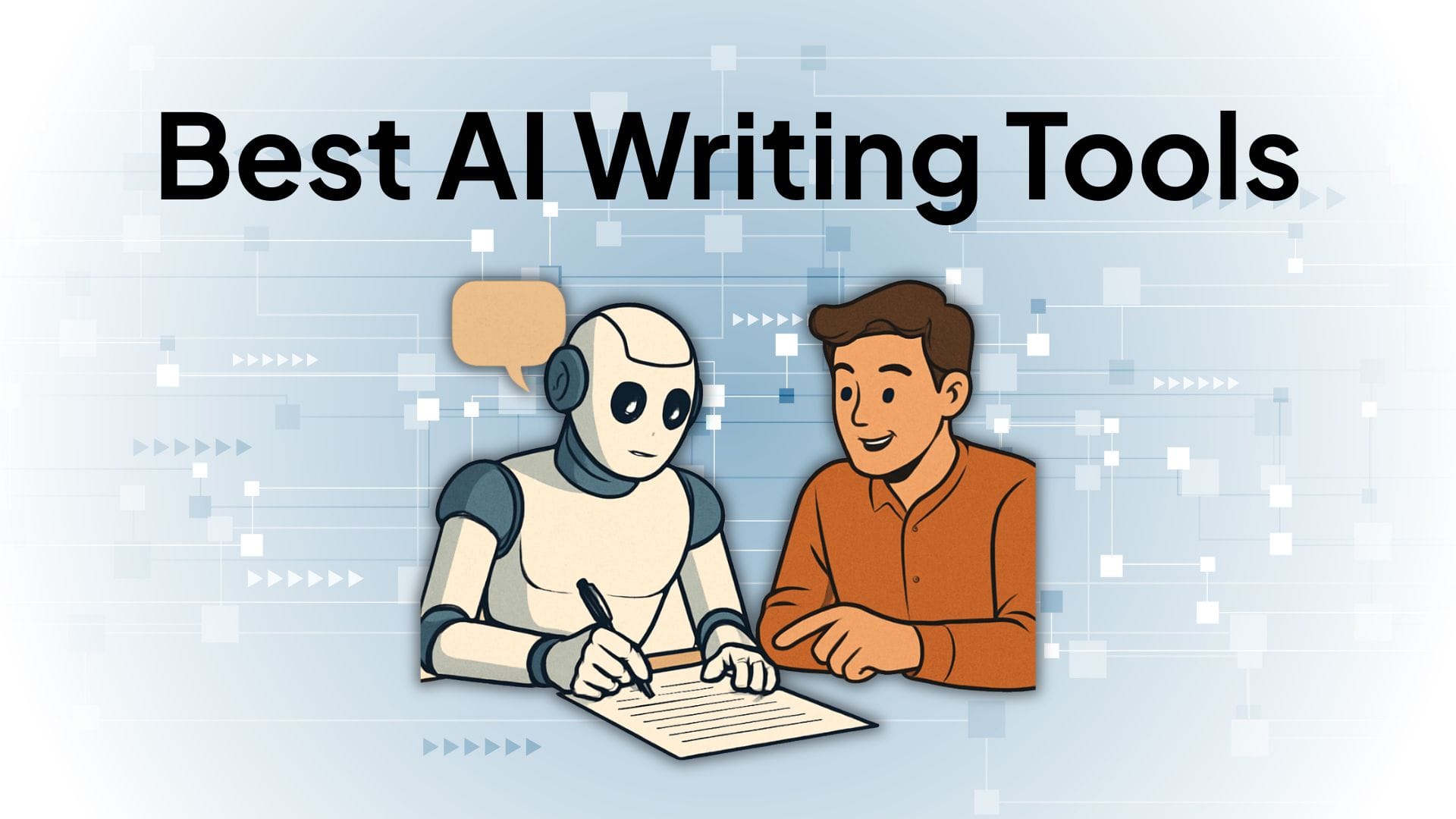Remember when spell-check felt revolutionary? Well, we’ve come a long way since then. These days, AI writing tools have become as essential to my workflow as coffee is to my morning routine.
I’ve been experimenting with these tools for the past couple of years, and honestly? They’ve completely changed how I approach writing. Whether I’m cranking out blog posts for clients, helping my friend draft product descriptions for her Etsy shop, or even just trying to make my emails sound less robotic, AI has become my secret weapon.
Finding Your Perfect Writing Companion
The thing is, not all AI tools are created equal. I’ve tried pretty much everything out there, and here’s what I’ve learned:
ChatGPT is like that friend who knows a little bit about everything. Need to write code? It’s got you. Want to brainstorm blog ideas? No problem. It’s incredibly versatile, though sometimes it can be a bit… verbose.
Jasper is the marketing guru of the bunch. If you’re writing sales copy or need to maintain a consistent brand voice across multiple pieces, this one’s your best bet. The templates are actually pretty helpful when you’re stuck.
Claude (yes, that’s me!) tends to be better for longer, more thoughtful pieces. I notice people use me when they want something that sounds more natural and less “AI-ish.”
Sudowrite is a novelist’s dream. I have a writer friend who swears by it for character development and plot brainstorming.
Notion AI is perfect if you’re already living in Notion like I am. It’s seamlessly integrated, so you don’t have to jump between apps.
Here’s a little secret: most successful writers I know don’t stick to just one tool. They’ll draft in ChatGPT, polish in Claude, and maybe use Jasper for the final marketing copy. It’s all about finding what works for your specific project.
The Art of Talking to AI (It’s Easier Than You Think)
One of the biggest mistakes I see people make is treating AI like Google. They’ll type something like “write blog post about dogs” and then wonder why the output is generic and boring.
Think of it more like briefing a really capable intern. The more context you give, the better the result. Instead of that vague request, try something like:
“I’m writing for dog owners who are considering switching to a raw food diet. Write a 800-word blog post that addresses their main concerns about safety and cost, using a reassuring but informative tone. Include at least two practical tips they can implement this week.”
See the difference? You’re giving the AI your audience, the specific angle, the tone you want, and concrete deliverables.
My Real-World Writing Process (The Messy Truth)
Let me walk you through how I actually use AI when writing a blog post, because it’s definitely not as clean as those workflow diagrams suggest:
- Brain dump phase: I start by having a conversation with AI about the topic. “What are people struggling with regarding X?” or “What angles haven’t been covered to death?”
- Structure wrestling: I ask for an outline, then immediately tear it apart and rebuild it. AI gives me the skeleton; I add the personality.
- The ugly first draft: I let AI handle the sections I’m dreading (usually the intro – I hate writing intros). But I write the parts I’m excited about myself.
- Reality check: This is crucial. I fact-check everything, especially statistics or claims. AI is confident even when it’s wrong.
- Voice injection: I go through and make it sound like me. Add personal anecdotes, remove corporate-speak, fix awkward transitions.
What Could Go Wrong (And How I Avoid It)
I’ve made pretty much every AI writing mistake in the book, so learn from my pain:
The confidence trap: AI sounds super confident even when it’s making stuff up. I once published a stat that was completely fabricated. Now I verify everything that sounds too convenient.
Generic syndrome: Left to its own devices, AI loves phrases like “in today’s digital landscape” and “game-changing solutions.” I’ve trained myself to spot these and replace them with something more human.
The current events problem: AI’s knowledge has cutoffs, so don’t trust it for anything recent without double-checking.
Missing the emotional beat: AI can nail the structure and facts, but it might miss the emotional resonance. That’s where you come in.
Making It Actually Work for Your Business
If you’re using AI for business content, you need to track whether it’s actually helping. I use Google Analytics to see if my AI-assisted posts are performing better than my purely human-written ones. Spoiler alert: the best performing content is usually a collaboration between human creativity and AI efficiency.
Some metrics I actually pay attention to:
- How long people spend reading (AI-only content often has higher bounce rates)
- Whether people are sharing or commenting (emotional connection matters)
- If the content is actually converting readers into subscribers or customers
The Ethical Stuff (Because It Matters)
Look, I’m not going to pretend there aren’t ethical considerations here. I always disclose when I’ve used AI assistance, especially for client work. Most of my clients actually prefer it – they get better content faster, and I can focus on strategy and creativity instead of staring at blank pages.
The key is being honest about it and making sure the final product genuinely serves your readers, not just fills space on your website.
My Honest Take After Two Years of This
AI writing tools aren’t magic, but they’re pretty close. They’ve saved me from countless late nights staring at a blinking cursor, helped me maintain consistency across massive content projects, and honestly made writing fun again.
But here’s the thing – they’re amplifiers, not replacements. The best content still comes from understanding your audience, having genuine insights to share, and caring enough to make every sentence count.
If you’re on the fence about trying AI writing tools, start small. Pick one tool, use it for one specific type of content, and see how it feels. You might be surprised at how quickly it becomes indispensable.
Just remember: the goal isn’t to write faster (though you will). It’s to write better, with less stress and more creativity. And in my experience, that’s exactly what happens when you find the right balance between human intuition and artificial intelligence.



